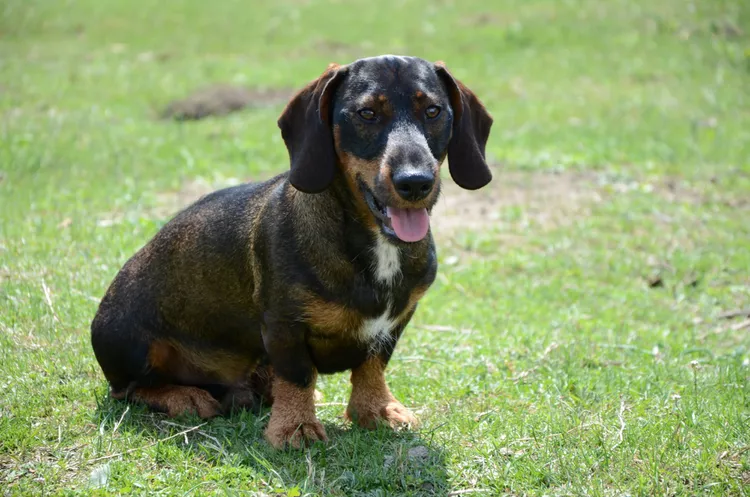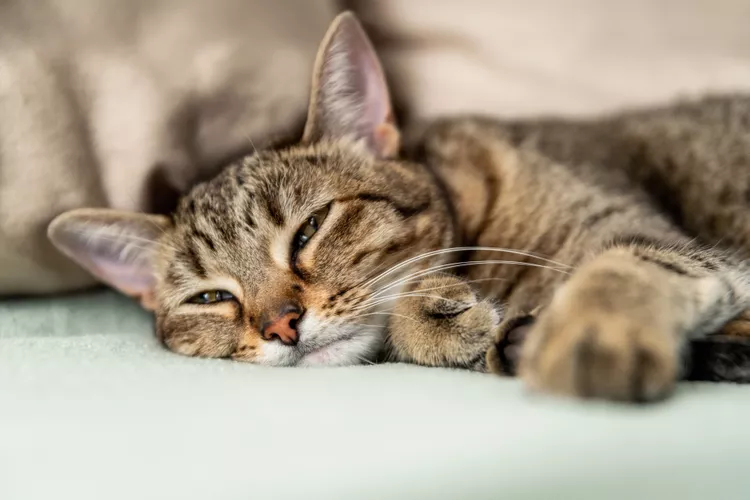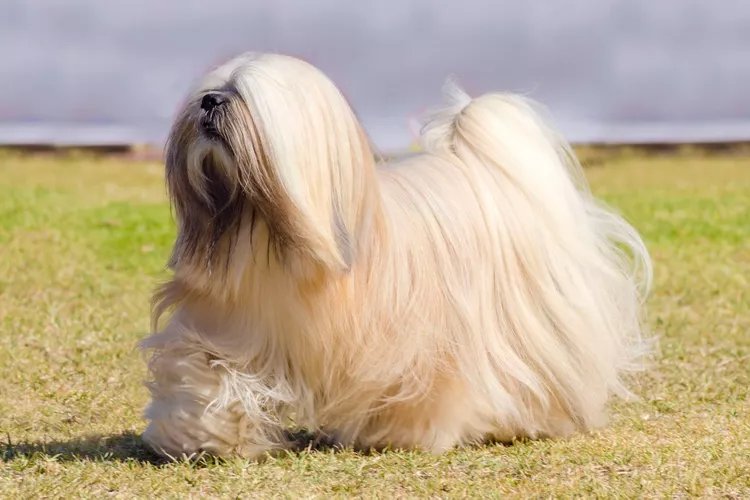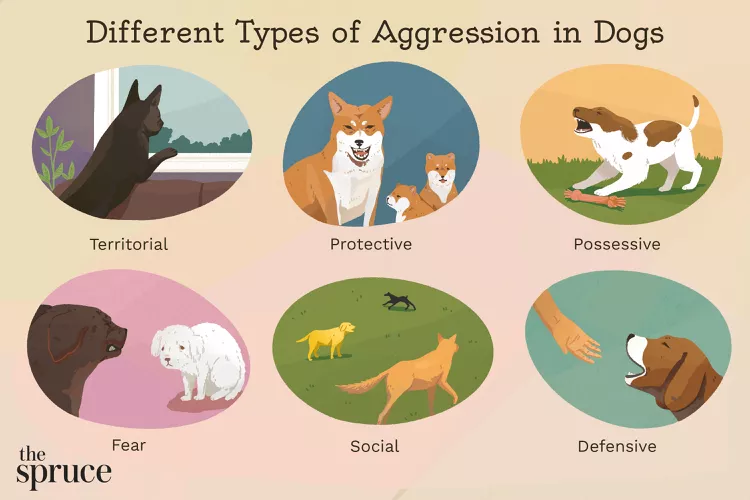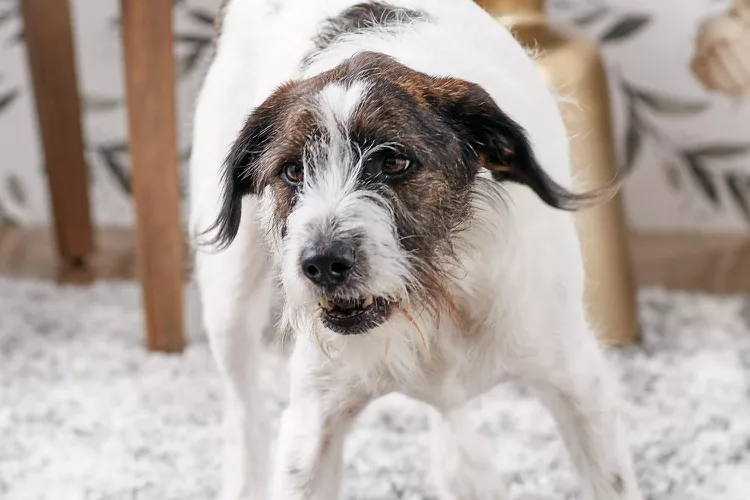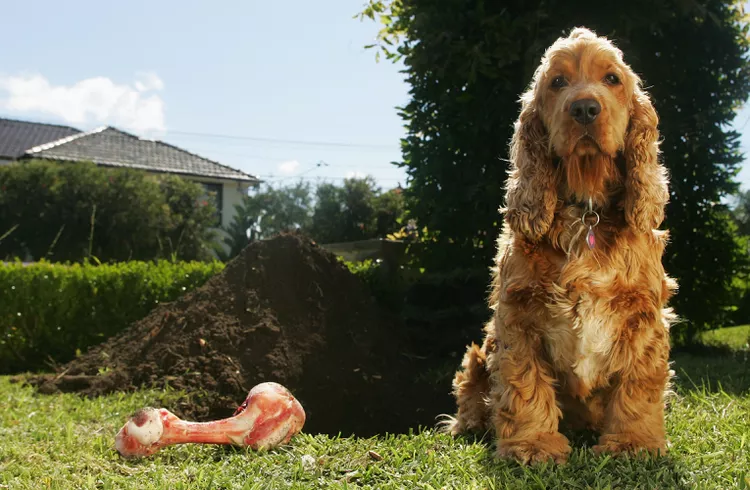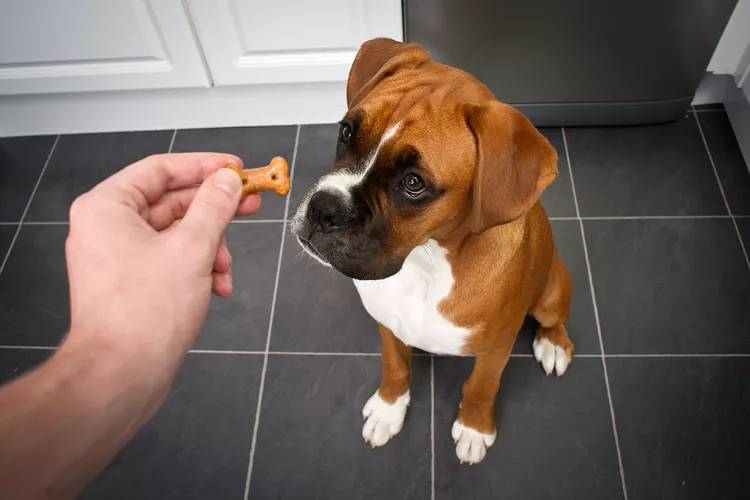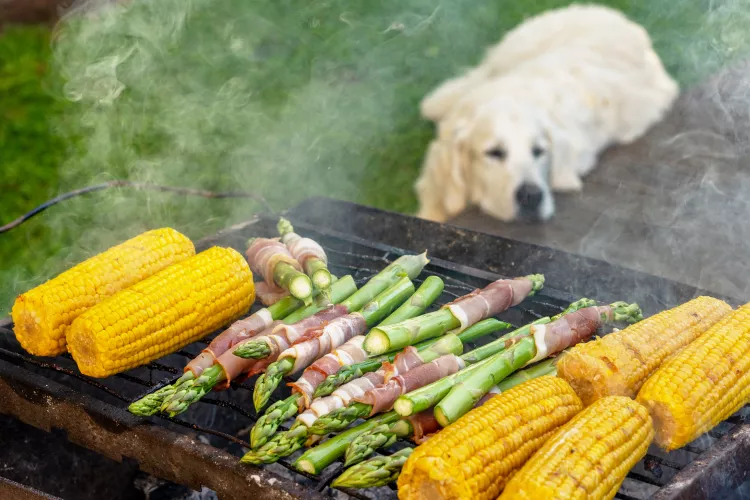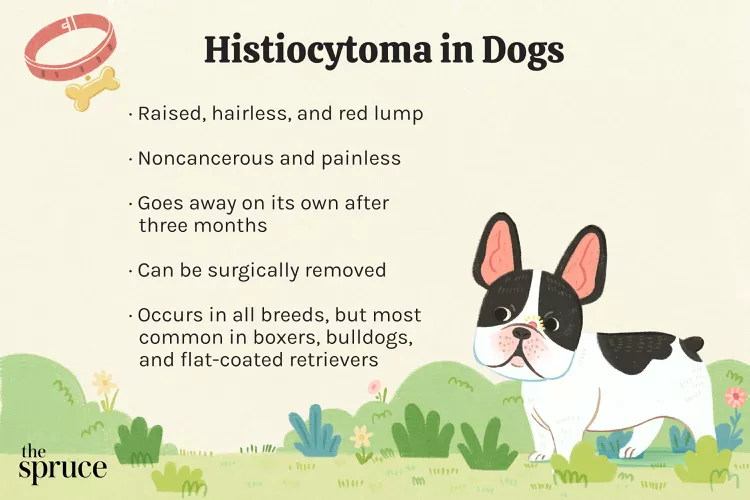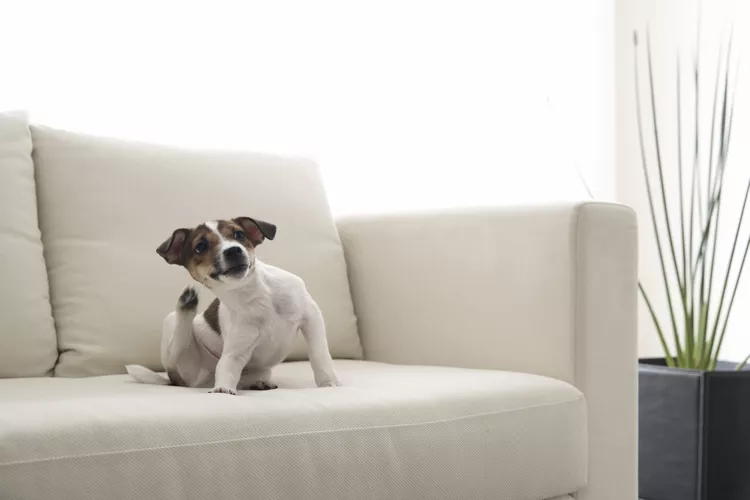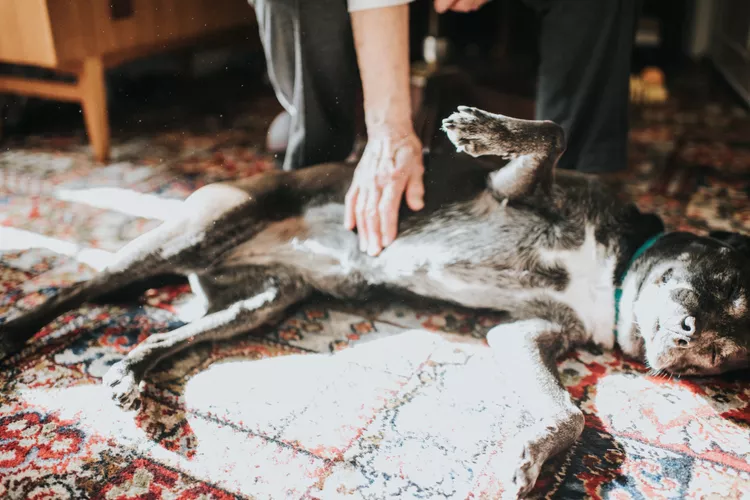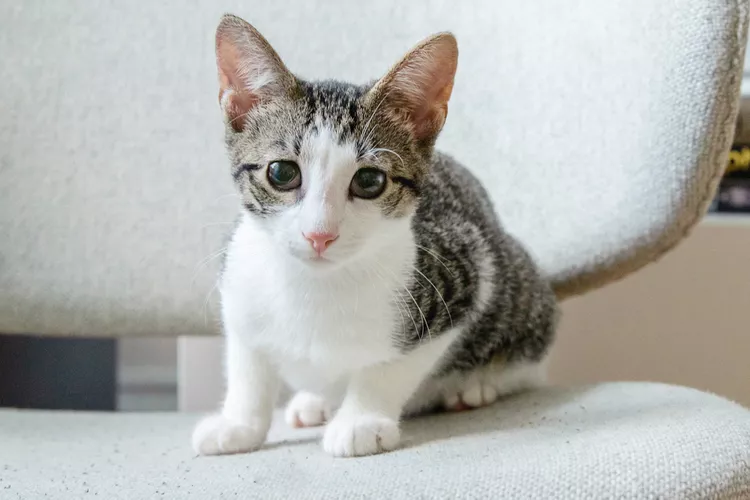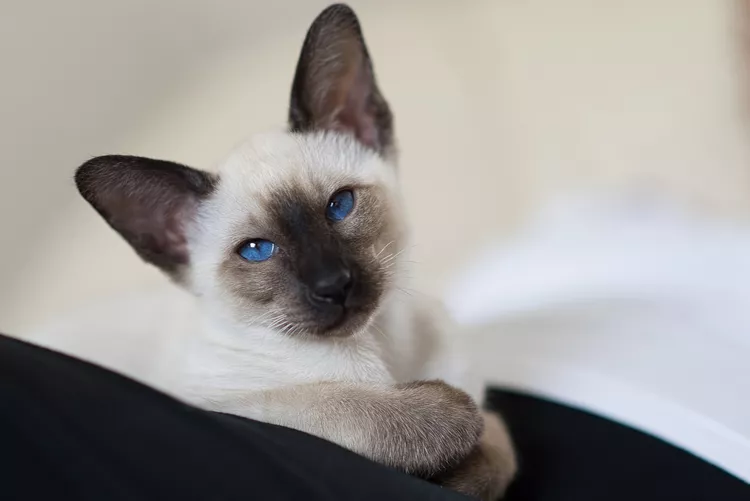- 01 of 18
Beagle
Beagles have one of the best noses in the entire canine kingdom, plus a keen intelligence that comes in handy when you’re trying to pick up a particular scent. Their small size, athleticism, and natural affinity for agility make beagles a formidable scent hound with plenty of energy to keep on the trail for hours on end.
Breed Overview
Group: Hound (AKC)
Height: 13 to 15 inches
Weight: 20 to 30 pounds
Coat and Color: Short coat in tricolor (tan, black, and white), red and white, and lemon and white
Life Expectancy: 10 to 15 years
- 02 of 18
Dachshund
That wiener dog stature isn’t just for show. Despite their small size, dachshunds are prized hunters that use their noses to track subtle scents both on the ground and in the air. They’re the only scent hound certified to hunt both below and above ground—pretty impressive for such tiny pups.
Breed Overview
Group: Hound (AKC)
Height: Standard: 8 to 9 inches; miniature: 5 to 6 inches
Weight: Standard: 16 to 32 pounds; miniature: less than 11 pounds
Coat and Color: Shorthaired, longhaired, and wirehaired coat varieties; colors include black, tan, fawn, beige, blue, chocolate, and red with various markings, such as dapple, piebald, brindle, and sable
Life Expectancy: 12 to 16 years
- 03 of 18
Basset Hound
Another short breed with incredible scent capabilities, the basset hound has been bred for years to help on the hunting field and has a natural ability to detect and track even the most subtle smells. It’s no mistake that they’re also quite squat in stature—it's a useful trait when your job is to keep your nose to the ground.
Breed Overview
Group: Hound (AKC)
Height: less than 15 inches
Weight: 40 to 65 pounds
Coat and Color: Short hair; colors include black and mahogany, white, brown and tan, red, and lemon
Life Expectancy: 12 to 13 years
- 04 of 18
English Foxhound
With a name like the English foxhound, it's clear that these dogs have superior scent abilities. In 17th-century England, the breed was developed by crossing stag-hunting dogs with greyhounds to improve speed and agility. They became highly effective fox hunters and remain so to this day. English foxhounds are relatively rare in the U.S. due to the prevalence of the American foxhound.
Breed Overview
Group: Hound (AKC)
Height: 24 inches
Weight: 60 to 75 pounds
Coat and Color: Looks a lot like a beagle with a taller, leaner frame; short double coat in black, white, and tan or lemon and white
Life Expectancy: 10 to 13 years
Continue to 5 of 18 below - 05 of 18
American Foxhound
The American foxhound was developed from the English foxhound and has the same masterful sniffer. This breed loves to put their nose to work and is one of the few scent hounds who head out on their own to track while their person stays in place. When they catch a scent, they let out a unique bark called a “bray” that alerts their humans to the trail.
Breed Overview
Group: Hound (AKC)
Height: 21 to 25 inches
Weight: 60 to 70 pounds
Coat and Color: Looks a lot like a beagle but with a tall and lean frame; medium-length coarse coat close to the body; tricolor; most common colors include a combination of white, black, and tan but shades of blue, red, and cream are also possible
Life Expectancy: 10 to 12 years
- 06 of 18
English Springer Spaniel
The English springer spaniel can pick up all scents and is a pro at detecting both hot and cold scents as well as picking up scents in both wet and dry conditions. This scent hound can notice smells in the wind and are good on the trail, too. This ability to apply their impressive snouts to a wide range of conditions has made this breed preferred for tracking explosives, narcotics, and even human remains.
Breed Overview
Group: Sporting (AKC)
Height: 19 to 20 inches
Weight: 40 to 50 pounds
Coat and Color: Medium-length flat or wavy, glossy topcoat; short, profuse, and soft undercoat; black or liver with white markings or the opposite; blue or liver roan are also common; tricolor, which includes black, white, and liver or tan markings
Life Expectancy: 12 to 14 years
- 07 of 18
Bloodhound
Bloodhounds are the poster child of the scent hound breeds and are one of the original tracking breeds. They've been putting their noses to work on the hunt as early as 1000 and have a one-track mind that does not like to give up on a scent.
Breed Overview
Group: Hound (AKC)
Height: 23 to 27 inches
Weight: 80 to 110 pounds
Coat and Color: Short, dense, loose coat in tan, black, liver, and red; darker coat colors tend to have flecks of white, black, gray, or brown
Life Expectancy: 10 to 12 years
- 08 of 18
Grand Bassett Griffon Vendéen
Grand Bassett Griffon Vendéen is a French scent hound developed to help hunt deer, boar, and other large game. The name can be roughly translated as "large, low, shaggy dog of the Vendéen." Their long, short bodies and drooping ears are typical of hounds, and that shaggy coat adds a unique, endearing appearance. Despite their cuteness, these hounds are sturdy and tenacious.
Breed Overview
Group: Hound (AKC)
Height: 15.5 to 18 inches
Weight: 40 to 45 pounds
Coat and Color: Rough, scruffy, and shaggy with extra length around the eyes and chin; double-coated, long, rough outercoat and soft, thick undercoat; colors include tricolor, yellow, orange, black, and sable
Life Expectancy: 13 to 15 years
Continue to 9 of 18 below - 09 of 18
Petit Basset Griffon Vendéen
They look more shih tzu than hound, but the basset griffon Vendéen is a true hound developed from the slightly larger grand basset griffon Vendéen. For centuries, this breed has been using its superior nose work abilities to help track rabbits and other small prey with a remarkable ability to keep on track regardless of the terrain and conditions.
Breed Overview
Group: Hound (AKC)
Height: 13 to 15 inches
Weight: 25 to 40 pounds
Coat and Color: Rough, scruffy, and shaggy with extra length around the eyes and chin; double-coated, long, rough outercoat and soft, thick undercoat; colors include tricolor, yellow, orange, black, and sable
Life Expectancy: 13 to 15 years
- 10 of 18
Harrier
You might not know much about the harrier, which is an English scent hound breed that hasn’t made much of an appearance in popular canine culture (the AKC ranks them 189 out of 195 breeds). They might fly under the radar but are no stranger to the hunt with short legs and strong noses that can carefully follow any animal they set their snouts on.
Breed Overview
Group: Hound (AKC)
Height: 19 to 21 inches
Weight: 45 to 60 pounds
Coat and Color: Looks like a larger beagle or smaller foxhound; thick, short coat that comes in tricolor (black, brown, and white) or red and white
Life Expectancy: 12 to 15 years
- 11 of 18
Black and Tan Coonhound
The black and tan coonhound is the oldest of several coonhound breeds. This American dog breed was developed by crossing English hounds such as bloodhounds and foxhounds. This resulted in a hard-working dog capable of pursuing raccoons at night through rugged terrain and up trees, then howling to notify the hunter.
Breed Overview
Group: Hound (AKC)
Height: 23 to 27 inches
Weight: 65 to 110 pounds
Coat and Color: Short, dense coat in black with tan markings
Life Expectancy: 10 to 12 years
- 12 of 18
American English Coonhound
The American English coonhound was likely developed from English foxhounds to hunt both fox and raccoons. Realizing the breed was best suited for nocturnal work, hunters and breeders used selective breeding to create a dog with speed, stamina, and the ability to navigate rough terrain.
Breed Overview
Group: Hound (AKC)
Height: 20 to 27 inches
Weight: 40 to 65 pounds
Coat and Color: Medium-length coat in tricolor, red, white, lemon, bluetick, redtick, or black and white
Life Expectancy: 10 to 12 years
Continue to 13 of 18 below - 13 of 18
Bluetick Coonhound
A close relative of the American English coonhound, the bluetick stands out for their unique blue color, which was inherited from the French hounds that contributed to the development of their ancestor, the American foxhound. Like Bluetick coonhounds are skilled at tracking and treeing small game and will call out to their humans during the pursuit to notify them of progress.
Breed Overview
Group: Hound (AKC)
Height: 21 to 25 inches (female), 22 to 27 inches (male)
Weight: 45 to 65 pounds (female), 55 to 80 pounds (male)
Coat and Color: Short, smooth coat in blue ticked or blue ticked and tan; black spots
Life Expectancy: 11 to 12 years
- 14 of 18
Treeing Walker Coonhound
Another coonhound descended from English foxhounds, the treeing Walker coonhound has most of the traits of the bluetick and American English. They hunt similarly, treeing raccoons and calling to the hunter to inform of their "catch." These dogs may be more heat-tolerant than other coonhounds, a useful quality in the deep South. They're also quite skilled at following cold (old) trails.
Breed Overview
Group: Hound (AKC)
Height: 20 to 25 inches (female), 22 to 27 inches (male)
Weight: 50 to 70 pounds
Coat and Color: Short, smooth coat in white, black, or tricolor with various markings
Life Expectancy: 12 to 13 years
- 15 of 18
Redbone Coonhound
The Redbone coonhound sports a striking red coat and has an outgoing personality to match. American settlers developed the breed from red foxhounds brought to the continent by the Scottish. While prized for their ability to track both small and large game, they're also beloved for their affectionate nature and sociability.
Breed Overview
Group: Hound (AKC)
Height: 21 to 27 inches
Weight: 45 to 70 pounds
Coat and Color: Short, smooth coat in deep, solid red
Life Expectancy: 10 to 12 years
- 16 of 18
Plott Hound
Although their name doesn't indicate it, Plott hounds are among six officially recognized AKC coonhound breeds. They were first developed from German hounds and later crossed with American hunting dogs to create a confident steadfast breed that could track large and small game and call out to the hunter with a bay followed by a distinct bark.
Breed Overview
Group: Hound (AKC)
Height: 21 to 27 inches
Weight: 45 to 70 pounds
Coat and Color: Short, smooth coat in deep, solid red
Life Expectancy: 10 to 12 years
Continue to 17 of 18 below - 17 of 18
Otterhound
The Otterhound is a rare dog breed originally developed in England to hunt otters. Crossing several different hunting dogs, including shaggy French hounds and bloodhounds, resulted in a large, water-friendly scent hound that could track otters through the water. Otterhounds became rare after the 1970s when hunting otters was outlawed due to endangerment of the species.
Breed Overview
Group: Hound (AKC)
Height: 24 to 27 inches
Weight: 80 to 70 pounds
Coat and Color: Short, smooth coat in deep, solid red
Life Expectancy: 10 to 12 years
- 18 of 18
English Pointer
Pointers aren’t short and stocky like many other scent hounds, but this breed is still one of the best hunting companions. They have an exceptional talent for air-based prey. They feature a deep muzzle, wide nostrils, and ultra-powerful sniffers that quickly pick up the trail of game birds.
Breed Overview
Group: Sporting (AKC)
Height: 23 to 28 inches
Weight: 45 to 75 pounds
Coat and Color: Short coat, sometimes solid and sometimes with markings; color combinations include white with liver, lemon, orange, or black markings
Life Expectancy: 12 to 17 years
Breeds to Avoid
All dogs have exceptional noses, but they’re not all worthy of serving as scent hounds. Some breeds that aren’t ideal if you’re looking for scent hound qualities are short-snouted breeds like English bulldogs, French bulldogs, and boxers as well as notably non-scent dogs (but instead, sighthounds) like greyhounds, whippets, and Afghan hounds.
